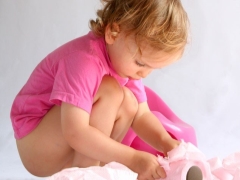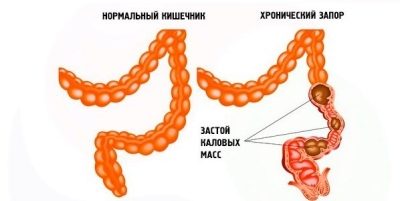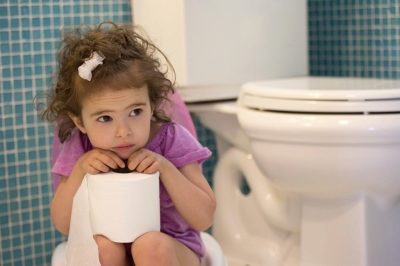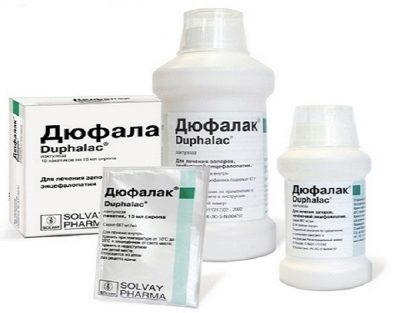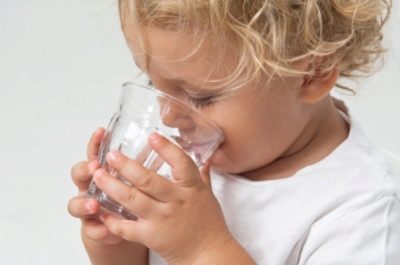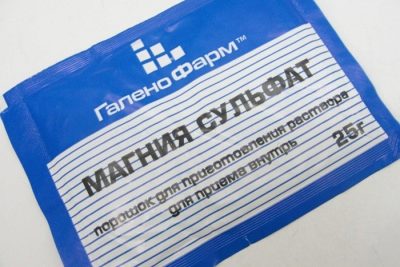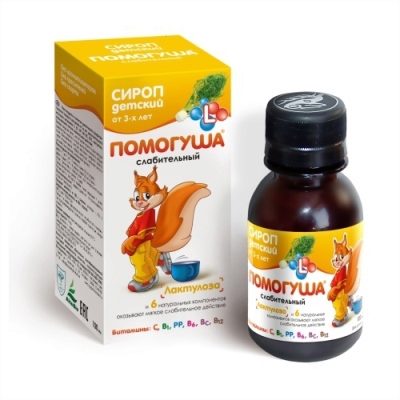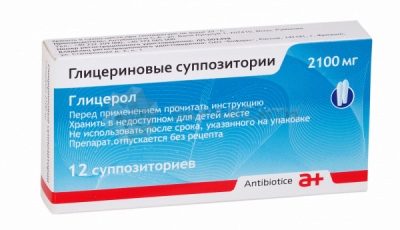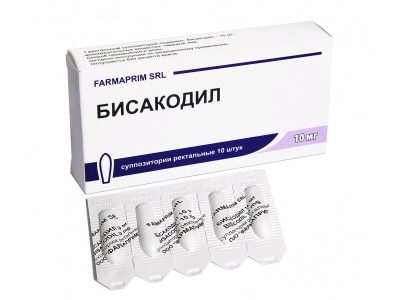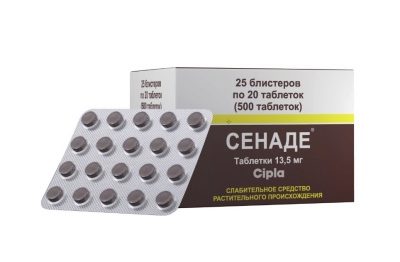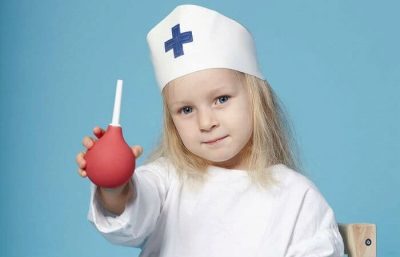Laxatives for children
Constipation in children is a fairly frequent phenomenon. This is due to the fact that the baby's digestive system and intestines, like many other organs and systems, are not yet fully formed. The intestinal microflora of the newborn is far from ideal. She will have to improve in the next few years, and no one will give you any guarantees that this development will be easy.
Let's try together to figure out how to help your child overcome physiological problems with the intestines. How to relieve his condition with constipation? What pharmacy laxatives can help parents and do they have folk analogues?
Norm and pathology
In case of constipation, the baby often complains of abdominal pain, cannot empty the intestines on its own, becomes capricious, cries more often, it shows signs of intoxication of the body - weakness, lethargy, headaches.
Everyone goes to the toilet differently - some children more often, others less often, and in order to judge constipation as an illness, you need to know the average rate of stool frequency at different ages. And they are:
- Newborns. Kids from 0 to 4 months can go to the toilet “big” up to 8 times a day. And the norm will be considered if the child pokes once, and if he does this 8 times. Fecal matter not formed, quite liquid
- Children under 2 years. At this age, it is considered normal if the child empties the intestines 1 to 3 times a day. The feces form, already has a denser consistency, a specific odor appears.
- Children aged 2 to 4 years. Such babies should ideally be 1-2 times a day. Fecal masses are fully decorated, the process of formation of bowel function is almost complete.
- Children from 4 to 6 years. At this age, boys and girls can go to the toilet "big" as 1-2 times a day, and 1 time in two days. Both that, and another will be considered as norm variants.
Thus, it is possible to talk about constipation if the frequency of a child’s stool differs from the norm by at least a day — two.
Dr. E. O. Komarovsky tells in the video about the causes of constipation in children and methods for their elimination:
The reasons
Constipation in children can occur for various reasons. The most innocuous of them - especially the food crumbs. Unfortunately, difficulties with defecation sometimes indicate more serious violations - abnormalities of the intestinal structure, dysbacteriosis, metabolic disorders, acute inflammatory processes, problems requiring surgical intervention by experienced surgeons.
For this reason, with repeated constipation, you must show the child to the doctor.
Remember that “alarm bells” are often recurring constipation, pain during defecation, a sharp unpleasant smell of feces, the presence of impurities in them - pus, blood, pieces of unprocessed food, nausea and vomiting.
Operating principle
Laxatives for children can be of two types - these are synthetic medicines or phytopreparations, designed to eliminate intestinal disorders. They are not at all harmless, although they are sold at any pharmacy without a prescription. Laxative drugs have their own indications and contraindications.
Laxatives on the principle of action can be divided into several groups:
- Medicines that irritate the intestinal mucosa. These drugs begin to operate a maximum of 2 hours after taking the pill. They stimulate the output of feces accumulated in the intestine.
- Drugs that perform the function of fillers. Once in the intestine, they increase in volume, saturate the digestive tract with fluid, and as a result, feces leave the body faster.
- Medicines that retain water in the intestines. Through the intestinal wall, these drugs draw water from the body and accumulate it in the intestine. Liquid softens the fecal masses and promotes bowel movements.
- Drugs acting in the small intestine. They usually contain butter (vaseline, fennel, liquid paraffin, etc.). These substances provide an increase in sliding the contents of the intestine to the exit. Operate 3-5 hours after administration.
Requirements
Ideal baby laxative should be non-toxic, acting most gently, preferably of plant origin.
The remedy for constipation for children should not be addictive and contribute to the development of the syndrome of "lazy bowel", when, with frequent use, the child stops emptying at all, without medication. This syndrome can significantly complicate the situation, as degenerative changes in intestinal receptors can begin.
Under the description of laxatives recommended for children, drugs that soften fecal masses and products based on natural oils are the best suited. Lactose-based drugs are recommended for infants and toddlers who are barely 1 year old. In addition to solving the main problem, they contribute to the formation of their own normal intestinal microflora, which will allow the child to forget about such a delicate problem as constipation in the future.
Children's forms of laxative medicines are almost indistinguishable from adults — drops, syrups, rectal suppositories, tablets and powders. The solid form of the drug implies a higher age of the child. Babies under 4–5 years old should preferably be given a laxative in the form of syrup, drops, and candles. The tablet form of the drug - for children 7-9 years. Starting from 10-12 years, the child can be given capsules.
Consider that the candles act faster than the pills, so if you need to achieve a quick effect, it is better to give preference to topical preparations. If the choice is between a syrup or a tablet, the syrup will have a faster effect.
Laxatives should not be given to a child if his constipation is caused by acute intestinal diseases, sometimes requiring surgery (appendicitis, for example). Another important detail: all laxatives eliminate only the effect, but do not cure the cause of constipation. That is why it is important to inspect the baby, and if necessary, begin a comprehensive treatment.
The causes of constipation in children can be found by looking at the recording of the webinar conducted by Valeriy Privorotsky Valery Feliksovich, D.M.N., head of the abdominal pathology department of St. Petersburg State Budget Health Institution "Consultative and Diagnostic Center for Children":
The list of drugs and instructions for use
Duphalac
It is a transparent and very viscous syrup created from fillers based on real dietary fiber. Lactulose acts in the large intestine, improving its motility, retaining water and increasing the volume of fecal masses, simultaneously softening them. Helps to restore the intestinal microflora, to resist dysbiosis. Appointed even to newborns and infants. The drug is practically not absorbed into the body, quickly reaches the intestines and excreted. Contraindications - intestinal obstruction, and in some cases diabetes. The syrup should be given to the child once a day, preferably in the morning with meals.
Sodium sulfate
Like all salt laxatives, sodium sulfate must be approved by a doctor, otherwise it may end up sad. Salt quite aggressively acts on the receptors inside the intestine, pulling water out of the body and accumulating it in the intestine. Due to this, softening of the fecal masses is achieved. In young children with uncontrolled intake may occur dehydration. Unlike herbal preparations, the sodium salt of sulfuric acid cleanses the intestines throughout its length. Children dosage is calculated according to the formula "1 gram of salt for 1 year of life." Then it is diluted with warm water and allowed to drink. The effect is expected in about 5 hours. Contraindications - inflammatory processes in the intestine (appendicitis), inflammation of the peritoneum.
Magnesium sulfate
With the magnesium salt of sulfuric acid the situation is the same as with the sodium one described above. This is a laxative that should only be used as directed by the doctor. Magnesia is a fairly fast agent. Its action occurs 2-3 hours after ingestion. Take the powder, diluted with warm water on an empty stomach, in the morning, once a day. Long-term use of saline laxatives is not provided, they are “quick response” drugs intended for one-time use. In chronic constipation, this powder can be used in enemas. Magnesia is not recommended for children under 6 years old. From 6 to 12 years old - a single single dose - 5-10 gr. Powder. From 12 to 15 years old, it can be increased to 15 grams.
Normase
Mild laxative based on lactulose with the additional function of probiotics - "Normase»Stimulates the growth of beneficial lactobacilli, bifidobacteria in the intestine. Thanks to them, feces become softer and constipation stops. Contraindications: intestinal obstruction and inflammatory processes in it. The drug is in conflict with antibiotics that can reduce its effect, so you should not take "Normaz" simultaneously with antimicrobial agents.
Syrup "Normase"- a safe children's tool, reviews of which are extremely positive. Ideal for newborns. Dose for children under 1 year-5 ml. syrup a day. Babies from 1 to 6 years old dose is increased to 5-10 ml. From 6 years old and older, the medicine can be given at a dosage of 10-15 ml. "Normaz" is permissible to mix with fruit juice or juice, its effectiveness from such a "masking" will not change.
Forlax
It is a laxative that acts as a filler. In the intestine, the drug swells, increases in volume. The intestine responds to this by increased peristalsis, this allows in a short time to solve the problem of constipation. The medicine is sold in the form of powders with delicious fruit flavors. At home, a solution for drinking is easily prepared from such powders. Among the contraindications - intestinal obstruction, inflammation of the tract, suspected pathology, which must be surgically removed. The drug can not be taken to children under 8 years. Children over 8 years old are prescribed 10 grams per day. Powder, with the ineffectiveness of such a dose is allowed to increase it to 20 grams.
Helping laxative
It is a syrup designed specifically for the easy solution of delicate children's problems. It contains lactulose, fennel fruits, strawberry leaves, anise, cumin and cherry fruits. Additionally, the basic vitamins C, groups B and PP essential for the child’s body have been introduced into the composition. The drug is intended for children over 3 years. For babies from 3 to 7 years old, a dose of 15 ml is recommended, from 7 to 14 years old - 20 ml. The drug can be taken in a course of up to two weeks. The syrup is delicious, perfectly mixed with drinks - juice, water, tea. Therefore, they can easily and simply give to drink even a very capricious baby, who categorically refuses to take medicine. There are not many syrup contraindications, since it is a natural remedy.
Microlax
This laxative drug is available in small capsules with a solution for rectal use.Liquid with sorbitol inside the capsules effectively dilutes fecal masses, promotes quick and soft bowel movement. Since contraindications haveMicrolax"Practically absent, so microclysters can be made to children from birth. They act already 10-15 minutes after the microcapsule is carefully injected into the rectum and squeezes its contents. In order not to be mistaken with the dosage, on the tip of the microcapsule there is a special mark, to which you need to introduce a capsule. Three-year-olds and older, it is administered entirely, children younger - to the marked mark.
Prelaks
A soft laxative that comes in the form of oral fluid for adults, for children “Prelax-baby” and in the form of powder for preparation of the “Prelax-Light” solution. Children's form of medicine can be given to children from birth. The initial dose for babies up to 1 year is 10 ml. Children from 1 year to 6 years old give 15 ml. solution, children from 6 years-25-30 ml. In the first days of taking the drug, gas may be increased, the discomfort will pass and no additional treatment is required. The drug should not be given to a child if constipation is accompanied by nausea and vomiting. Antibiotics reduce the effect of Prelax, so taking them at the same time as this laxative is not recommended.
Regulax
A drug that irritates the intestinal wall. Due to this, a contraction of the tract occurs, and constipation can be overcome. After taking the medicine the desired effect can be achieved after 10-12 hours. In pharmacies sold in the form of drops and cubes for chewing. The initial dose for children from 4 years old is 4-8 drops. Cubes are designed for children over 12 years old and adults. For children under 4 years old, Regulax is not assigned.
Glycerol
Drug content glycerol in the form of rectal suppositories. Glycerin has a mild effect on the intestinal wall, dilutes the feces. The maximum dose is 1 rectal suppository per day. You can use the drug from birth. For the youngest patients, the doctor should determine the dosage.. For constant use candles "Glycerol" is not suitable, they are recommended to be used to relieve the condition in acute constipation.
Bisacodyl
It is a medicine acting at the level of the small intestine. Available in tablets, dragees and rectal suppositories. Children are recommended from the age of two, once a day. The dose for children from 2 to 7 years is one tablet per day or half a rectal suppository. From 2 to 14 years old, children are given either 2 tablets, or they inject a whole candle rectally. The drug is not intended for long-term and systematic use.
Senade
These are inexpensive laxative pills that are made from the leaves of the Norway Catholic senna. Such tablets can be used for a rather long time, they refer to non-addictive drugs.. Operate approximately 7 hours after administration. Recommended for children over 6 years old. Quite rarely, but still sometimes assigned to children from 3 to 6 years. This decision is made solely by the doctor. The dose for children from 6 to 12 years is half a tablet per day. If there is no desired effect, the dose can be increased by another half a pill. Children over 12 years old starting dose will be 1 tablet, if necessary, the dose can be increased to 2 tablets. They should be taken once a day.
Guttalaks
The drug irritates the intestines, accumulating fluid in its lumen to facilitate bowel movement. In pharmacies at pharmacists, the agent exists in the form of drops with sorbitol for oral administration and in tablets. "Guttalaks"Not intended for children under 4 years old. Children up to 10 years old can be given up to 10 drops of the drug by mixing them with water or another drink. Children over 10 years old the maximum dose - 20 drops. This medicine has one interesting nuance - that the child should go to the toilet in the morning, drops should be given in the evening, before bedtime.
Enema
This way of helping a child with constipation has been known for a long time, and it has been practiced to this day.For problems with defecation, enemas for children are given with the addition of oils - petrolatum, castor, almond, and with the addition of glycerin.
Enema is good only as an “ambulance”, doing this procedure daily is a real crime against the health of the baby, since such a forced way of defecation is very detrimental to the ability of the child to go to the toilet on their own.
That is why doctors recommend using enema only as a last resort, if for some reason folk remedies and traditional medicines did not help the child.
Folk remedies
Before resorting to laxative medications, you can try to help your child cope with constipation with folk remedies. They act quite effectively, and in most cases, after taking herbal remedies, the need for tablets and syrups is eliminated.
The most famous "fighter with constipation" is common and affordable dill. You can make a decoction from it and give it to the child in the form of herbal tea. The effect should come in about 5-6 hours. If the child has already learned to eat solid food himself, invite him to eat 3-4 pieces of prunes. This is a mild natural laxative, after which the baby will have to wait 4-6 hours for relief.
To achieve a faster effect, you can give your baby a spoonful. castor oil. Of course, it is disgusting, but it works flawlessly - checked by generations!
Nutrition
If the child is prone to constipation, parents need to reconsider their diet. If we are talking about breastfed babies, you need to make sure that mom feeds properly, does not eat dishes that promote the consolidation of feces. Such "insidious" products include confectionery, white bread, potatoes, cabbage. A young mother should stop her attention on cereals, vegetable stews, baked apples (in small quantities), it is important to drink at least one and a half liters of liquid a day.
If the baby is on artificial feeding, the dosage and proportions of the adapted milk formula should be carefully observed. If constipation occurs frequently, despite the fact that the food is prepared correctly, you can add a little less than the prescribed amount of the dry mixture to the bottle, and additionally more often water the baby with drinking water.
In the diet of children from 3 years should not be foods that contribute to constipation - a lot of chocolate, pastries, carbonated drinks, rice, meat, chicken eggs. Constipation contribute to pasta, pears, pomegranate, smoked meats. And if constipation occurs frequently, you need to give your child fruits and vegetables with a laxative effect - cabbage, pumpkin, beets and beet juice, zucchini, bran, plum, peach.
Food for constipation should not be plentiful, fat. It is better to feed the child in smaller portions, but in two approaches than to feed him a whole plate of porridge or stew. In the diet of a child with a tendency to constipation must be fermented milk products, dried fruit compotes, rose hips, herbal tea.
Excellent prevention of constipation in a child will be not only a proper and balanced diet, but also a mobile lifestyle. Children who walk a lot and go in for sports have much less bowel problems.
Watch the video, which provides recommendations on the organization of food crumbs for problems with the chair:
